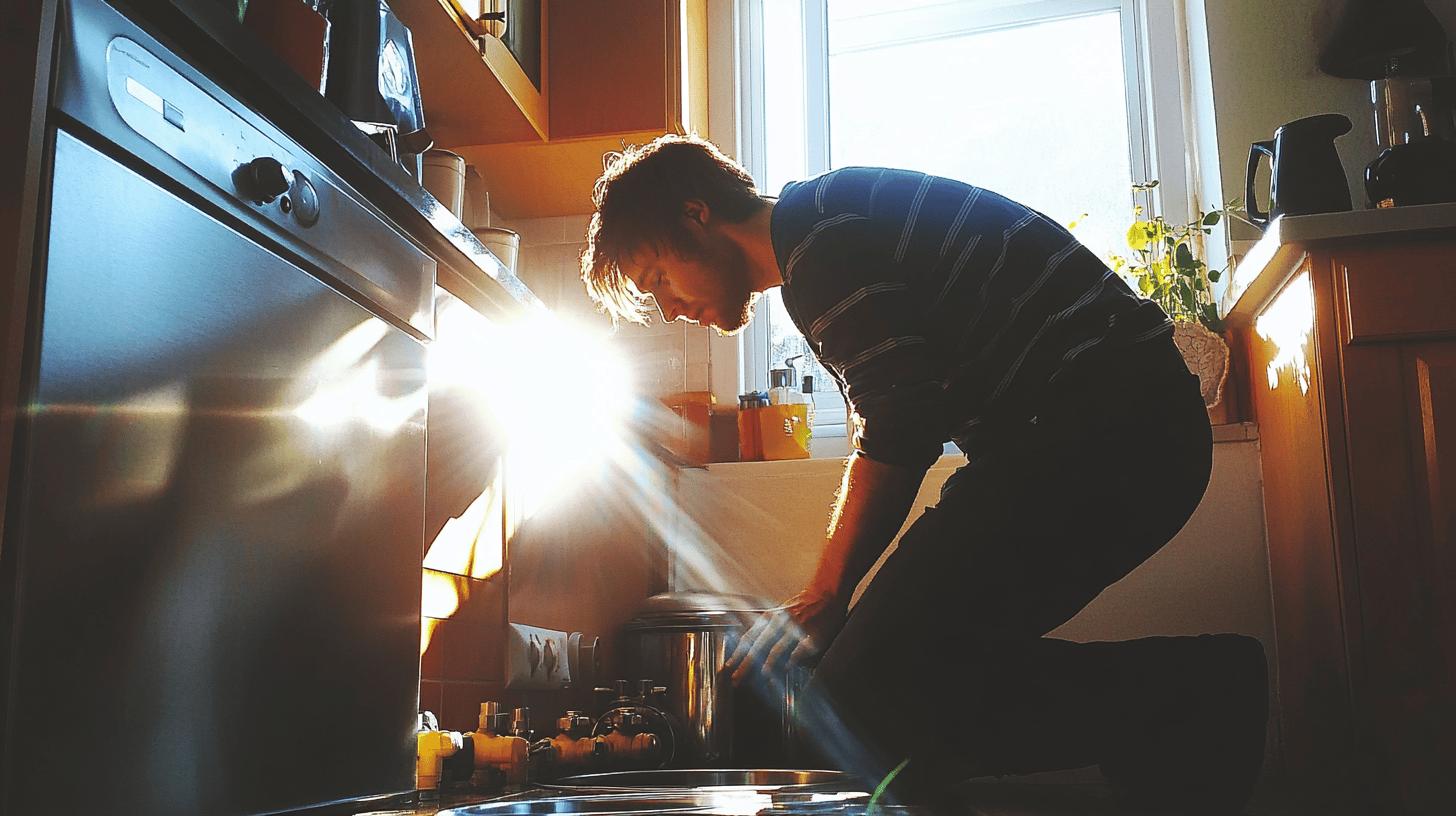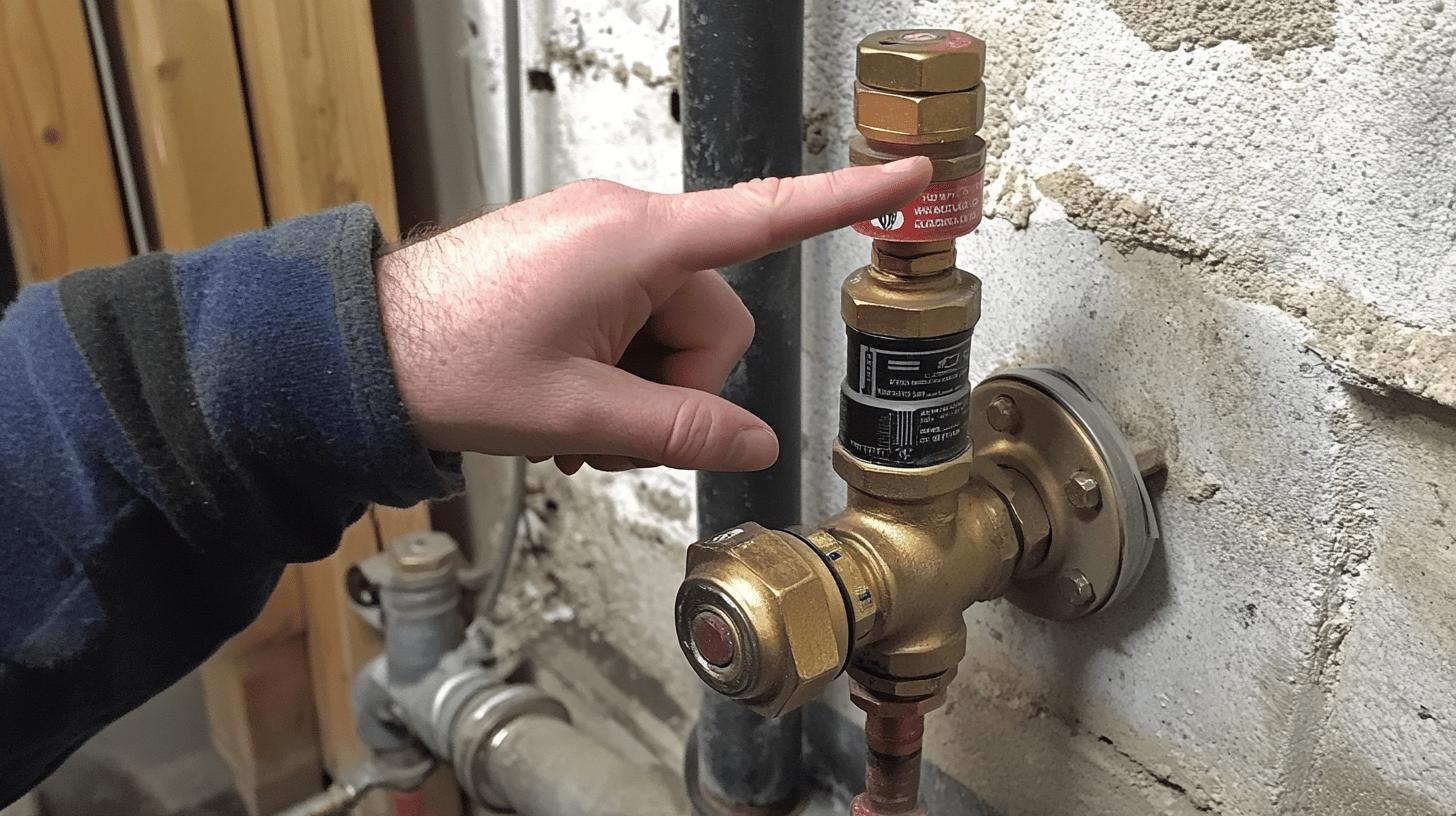TL;DR:
- Shut-Off Valve Location: Find under the kitchen sink; usually two valves (hot and cold) at the back.
- Valve Types:
- Compression: Round Knob
- Ball Valve: Lever
- Gate Valve: Football-shaped Metal Knob
- Shutting Off Water:
- Clear area, identify controls (knobs or levers), and turn valves (clockwise for knobs, right angle for levers).
- Main Shut-Off Valve: Located where main water line enters home; used for emergencies.
- Tools Needed: Flashlight, adjustable wrench, penetrating oil, bucket, towel.
- Seek Professional Help: If valves are stuck or malfunctioning.
Ever been caught off guard by a leaky faucet or a broken valve, flooding your kitchen? Knowing how to quickly locate and shut off your kitchen sink’s water supply can save you from a major headache. In this guide, we’ll walk you through the easy steps to find and operate your sink’s shut-off valves, giving you the confidence to handle plumbing issues on the spot. By understanding these basics, you’ll be prepared to tackle unexpected situations with ease, keeping your kitchen dry and your plumbing in check. Let’s dive into the steps for plumbing peace of mind.
Locating the Shut-Off Valve Under the Kitchen Sink
To locate your kitchen sink’s shut-off valve, begin by looking under the sink. You’ll typically find the valves at the back of the cabinet, where the water lines connect to the faucet. There are usually two valves—one for hot water and one for cold. These valves are often metal knobs or levers that control the flow of water. Knowing where these valves are and how to operate them gives you control over your kitchen water supply, helping you handle any plumbing issues that may arise.
| Valve Type | Shape | Location |
|—————|—————————–|—————————————-|
| Compression | Round Knob | Back of the cabinet, near the wall |
| Ball Valve | Lever | Inline with the supply line |
| Gate Valve | Football-shaped Metal Knob | Where the line enters the space |
Once you’ve identified the valves, make sure to clear the area under the sink to give yourself easier access. Remove any items stored there to improve visibility and allow for better movement. If the space is dark, use a flashlight to light the area. A clear view of the valves will make it easier for you to locate and operate them when needed, ensuring you can manage your kitchen plumbing with ease.
Steps to Shut Off Water Supply to the Kitchen Sink

Knowing how to turn off your kitchen sink’s water is vital for handling leaks or repairs. Whether facing a minor leak or starting a project, controlling water flow prevents damage and ensures smooth operations. Here’s how to handle this task:
- Locate the Valves: Check under the sink for two valves: hot and cold water.
- Clear the Area: Move items for unobstructed access to plumbing and valves.
- Identify the Controls: Determine if the valves have knobs or levers—knobs are round, levers are straight.
- Turn Off the Hot Water: For knobs, turn them clockwise until tight; for levers, rotate to a right angle against the pipeline.
- Turn Off the Cold Water: Repeat for the cold water valve.
- Verify the Position: Ensure valves are off; levers should be perpendicular to the pipeline.
After turning off the valves, open the taps to ensure the water has stopped flowing. If water continues to flow, double-check that the valves are fully turned off. If the issue persists, it might be time to consult a professional plumber to avoid further complications.
Troubleshooting Common Shut-Off Valve Issues
Kitchen sink shut-off valves can sometimes stick or be hard to reach. Avoid excessive force on stuck valves, as this could lead to damage. Clearing clutter or addressing awkward placements can help. Here are some tips:
- Use Penetrating Oil: Loosen stuck valves by applying a penetrating oil.
- Check Accessibility: Remove obstacles blocking access to the valves.
- Try a Wrench: Use a wrench carefully on stubborn valves, applying controlled pressure.
- Alternative Shut-Off: If valves fail, turn off the main supply or water heater temporarily.
If you’re unsure or if problems continue after adjusting the valves, it’s best to call a professional plumber. They can safely diagnose the issue and make any necessary repairs or replacements, ensuring everything is functioning properly.
Using the Main Water Shut-Off Valve

The main shut-off valve is essential for preventing damage when under-sink valves aren’t functioning properly. In emergencies, like burst pipes, turning off the main valve can stop water flow throughout the house, allowing you to manage the issue without additional damage.
Where is the main shut-off valve located? Typically, it’s where the main water line enters your home, often near the water meter. In colder climates, it might be inside a utility room, basement, or garage. Knowing its location is crucial for quick action in emergencies.
How to use it? Once located, check if it’s a knob or lever. For knobs, turn them clockwise until they’re fully tight. For levers, rotate them to block the pipeline entirely. This will stop the water flow to your home, buying you time to fix the plumbing issue.
Why consult a professional? After shutting off the main valve, open a faucet to confirm that water flow has stopped. If water continues, the valve might be faulty. A plumber can help verify the valve’s effectiveness and handle any necessary repairs.
Essential Tools for Shutting Off Water Supply
Having the right tools is crucial for shutting off your kitchen’s water supply effectively. Proper equipment ensures you can handle tight or hard-to-reach valves without causing plumbing damage. A basic toolkit, including adjustable wrenches and pliers, can make accessing and turning valves easier, especially if they’re in awkward spots or require extra torque. Being prepared with the right tools will help you manage under-sink issues quickly and efficiently, saving you time and effort in emergencies.
- Flashlight: Illuminates dark, cramped spaces under the sink.
- Adjustable Wrench: Helps grip and turn stubborn valves.
- Penetrating Oil: Loosens stuck valves gently.
- Bucket: Catches remaining water when opening plumbing.
- Towel or Rag: Cleans up spills or leaks during processes.
Avoid forcing stuck valves, as this can damage the pipes and create more problems. If the valve remains stuck despite using the right tools, it’s best to contact a professional plumber. They can safely address the issue without risking further damage to your plumbing system, ensuring everything is repaired correctly and efficiently.
Final Words
Mastering the process of managing your kitchen sink’s water supply begins with understanding the location and operation of the shut-off valves. By familiarizing yourself with these valves, you can address minor plumbing issues and perform routine maintenance with ease. Having the right tools and knowing when to call a professional for help ensures that you can resolve issues safely and effectively. With this knowledge, you’ll be equipped to confidently manage your plumbing and shut off the water supply to your kitchen sink whenever needed, keeping your home running smoothly.
FAQ
How to turn off water under-sink in bathroom?
To turn off the water under a bathroom sink, find the shut-off valves located under the sink. Turn each valve clockwise to stop the water flow.
How to turn off water under-sink without valve?
If no individual shut-off valve exists under the sink, use the main shut-off valve for the house, typically found near where the main water line enters.
No shut off valve under kitchen sink; how to stop water?
Find the main shut-off valve near your house’s water meter and turn it clockwise to stop the water flow to your kitchen sink.
How to turn off water to sink when stuck?
If the valve is stuck, don’t force it. Instead, turn off the water at your home’s main supply and contact a professional plumber for help.
Where is the water shut off valve for a kitchen sink?
The kitchen sink shut-off valve is typically located under the sink, toward the back and lower half. Remove stored items to access it.
Is it okay to shut off water under a kitchen sink?
Yes, it’s safe to shut off the water under a kitchen sink using the hot and cold water valves to prevent unwanted leaks or perform repairs.
Can you turn off water to one sink?
Yes, you can isolate water to one sink by closing the individual shut-off valves for that sink located under it.

